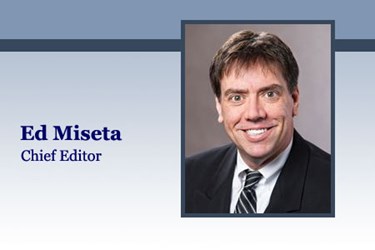Learning From Mistakes: Ulo Palm, SVP, Drug Development and Research Operations, Forest Laboratories
By Ed Miseta, Chief Editor, Clinical Leader

I have always been taught you can learn as much from your mistakes as you can from your successes. Oftentimes the lessons learned are much more valuable than what you glean from those positive outcomes. While all learning experiences are valuable, unfortunately some can come at a fairly high price. If the lesson is learned at work, and the cost is sufficiently high, you may even have concerns about your career. That is a situation that Ulo Palm, SVP of Drug Development and Research Operations for Forest Laboratories (recently acquired by Actavis), once faced. Palm shared this personal story during the Dirty Laundry session at the 2014 Disruptive Innovations conference.
“This lesson happened years ago during what I like to call the dark ages of patient recruitment,” says Palm. “Back then, we did not have the Internet, social media, and other sophisticated tools. You had to review investigator lists and call them to find out how many patients they could enroll in a study. Those who have done this can tell you it is not a very efficient way of managing recruitment.”
 |
| Ulo Palm, SVP of Drug Development and Research Operations, Forest Laboratories |
At the time, Palm was the new head of operations and one of his first tasks was to fix patient recruitment. One day a company showed up with a new and innovative way to perform patient recruitment. Palm was in the process of recruiting for a COPD (Chronic Obstructive Pulmonary Disease) study and desperately needed help. The novel idea presented to him was to recruit patients using pharmacies. Patients would be identified by their medicine purchases and pharmacists would be asked to approach patients about available trials and help bring them into the study. The presentation was very convincing, and Palm decided to give it a try. The total cost of this patient recruitment experiment: A hefty $2.8 million. Palm obtained approvals from his boss and the CFO, and suddenly his credibility was on the line.
It was agreed in advance that the total cost of the effort would be paid in stages, and tied to the results of the recruitment campaign. The first payment of $300,000 was made, with additional payments of $200,000 set to be made in the future. Unfortunately, that is when things started to go downhill. Set up took twice as long as planned, and when patients were supposed to be rolling in, no patients showed up. Palm became concerned and put a call in to the vendor.
“I was assured that the patients were coming and they were in the process of lining them up,” he says. “A second payment was made and suddenly the investment was up to a half-million dollars. Still no patients were showing up. I started to sweat as I thought back on my conversations with management where I assured them this plan would work. If we had gotten 300 patients instead of 500, that would have been bad enough. But we had invested $500,000 and did not have a single patient.”
Eventually the first patient did show, and soon thereafter a second. But the flow of patients Palm expected never materialized. By then the investment had risen to $700,000, meaning he had spent $350,000 apiece on each of the two patients. He knew something had to be done. That afternoon he bit the bullet, contacted his superiors, and declared defeat. He recommended the recruitment effort be brought to an end and the remainder of the contract cancelled.
It was at that point Palm began to worry about the reaction of his superiors. “That is when something unexpected happened,” he says. “I started getting emails from executives in the company telling me I did an excellent job. They were elated that I recognized there was a problem and stopped the program. They were less concerned that I spent $700,000, focusing more on the $2.1 million I saved the company by accepting defeat, making the hard decision, and taking the appropriate action when needed.”
One of the most important lessons Palm learned is that when you try to adopt new innovations, you are always taking a risk. He also learned the importance of properly managing and mitigating your risks. But most importantly, he learned how important it is to reward people for risk-taking.
“After that incident, I still needed to build up our recruitment tools,” he adds. “I continued to try new and innovative things, and eventually our recruiting efforts became extremely successful. That might not have happened had I been punished for taking the risk I did. If management had crucified me, I might not have taken any more risks, which would have been very detrimental for the success of our clinical trials. Having a supportive culture, encouraging people to take calculated risks and rewarding them for making the right decisions really paid off for my company in terms of fast, successful drug development. Risk, by definition, means bad things can happen. There is always uncertainty as to the outcome. But when you stop taking risk, you essentially stop trying. And in the pharmaceutical industry, we need people willing to take risks to move needed cures forward.”
